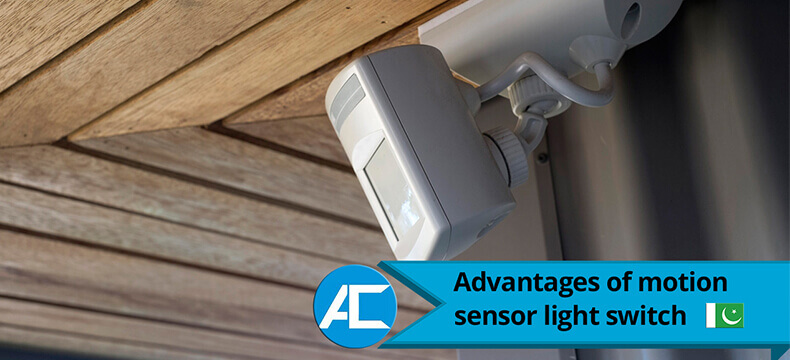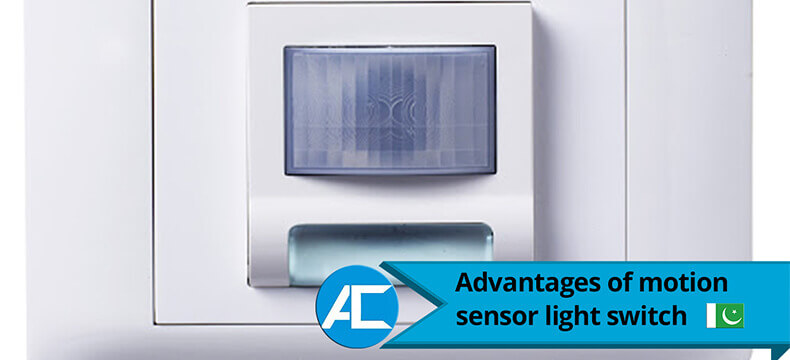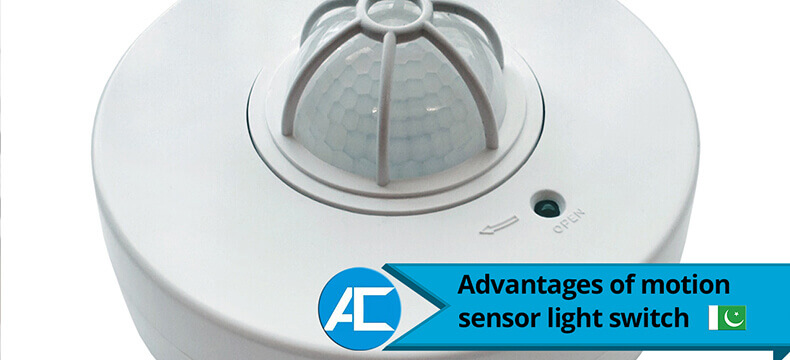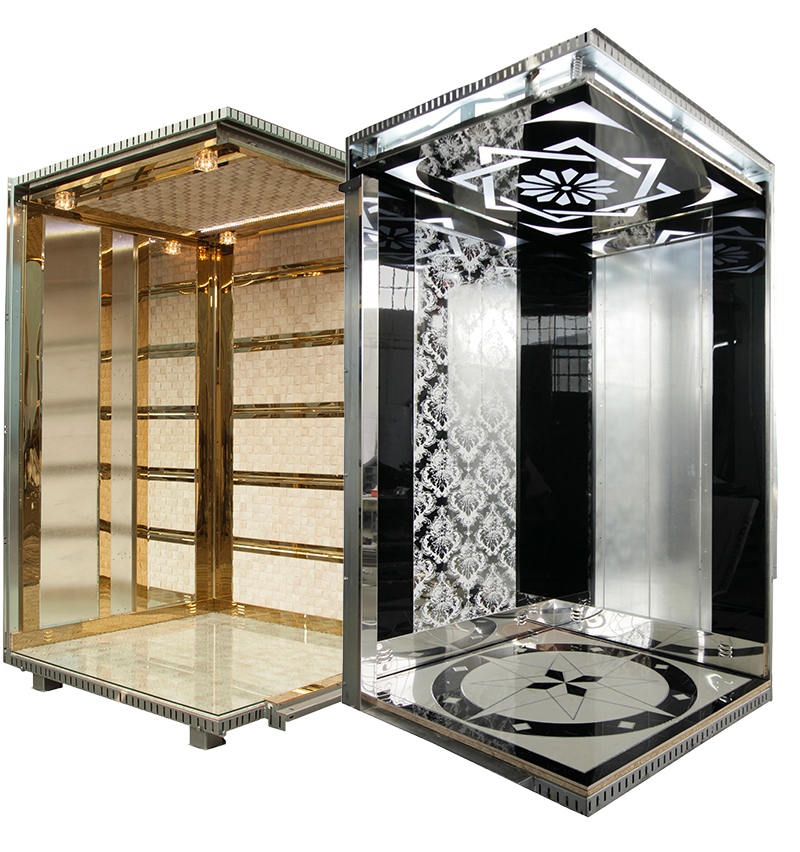Motion sensor light switches have revolutionized how we interact with lighting systems, offering many benefits ranging from energy efficiency to enhanced convenience. These switches utilize advanced technology to detect motion in a designated area and automatically turn lights on or off, making them an indispensable addition to various settings.
One primary advantage of motion sensor light switch is their contribution to energy efficiency. Unlike traditional switches that rely on manual operation, motion sensor switches activate lights only when movement is detected. This eliminates the all-too-common issue of lights being left on in unoccupied rooms, leading to substantial energy savings over time. This efficiency reduces utility bills and aligns with sustainable living practices, making it a win-win situation.
In addition to energy savings, motion sensor light switch greatly enhance convenience. Imagine entering a room with your hands full or walking down a dimly lit corridor – with motion sensors, the lights turn on automatically, eliminating the need to fumble for a switch. This ease and hands-free operation is precious in spaces where swift illumination is essential, ensuring smooth transitions and improved accessibility.
Furthermore, motion sensor light switch bolster safety and security. These switches minimize the risk of accidents due to poor visibility by illuminating spaces upon detecting motion. This feature is handy when sudden darkness can lead to trips and falls. Moreover, motion sensor lights deter potential intruders, as unexpected illumination can startle and discourage unauthorized access. And Access Technologies is best Elevators and Sensors light provider , and own by Imran Rafi.
Get Free QuotesEnhanced Energy Efficiency

Enhanced energy efficiency is a crucial aspect of sustainable development, as it directly addresses the growing concerns about resource depletion and environmental degradation. This phenomenon refers to using less energy to accomplish the same tasks, leading to reduced energy waste and carbon emissions. Moreover, it plays a pivotal role in mitigating climate change by curbing the excessive release of greenhouse gases into the atmosphere.
One key strategy to achieve enhanced energy efficiency is through technological advancements. Innovations in appliances, vehicles, and industrial processes continually emerge, fostering a transition towards more energy-efficient alternatives. For instance, the automotive industry has witnessed a shift towards electric vehicles that reduce dependence on fossil fuels and utilize energy more efficiently. Furthermore, integrating intelligent technologies, such as programmable thermostats and energy-efficient lighting systems, enables users to regulate energy consumption actively.
Policy frameworks also play a significant role in promoting enhanced energy efficiency across various sectors. Governments worldwide enact stringent regulations and offer incentives to encourage industries and individuals to adopt energy-saving practices. These policies encompass energy-efficient building codes, appliance efficiency standards, and tax incentives for renewable energy investments. Such measures not only optimize energy use but also stimulate economic growth through the development of new markets and green technologies.
In the broader context, enhanced energy efficiency fosters a more sustainable lifestyle. Individuals and businesses realize the long-term benefits of reduced energy consumption, leading to cost savings and a diminished ecological footprint. Moreover, it empowers individuals to make informed choices about their energy usage, thus contributing to a more conscientious and environmentally aware society.
Get Free QuotesImproved Convenience

Improved convenience is a driving force behind various innovations that simplify and enhance daily experiences. This concept revolves around making tasks, processes, and interactions more user-friendly and efficient, ultimately saving time and effort. With the rapid advancement of technology, improved convenience has become a central goal in designing products and services, revolutionizing how we live and interact with our environment.
One area where improved convenience is prominently seen is in communication technology. The evolution from traditional telephones to smartphones has led to a significant shift in how we connect. These handheld devices allow instant communication through calls and messages and offer various integrated features like email, social media, and video conferencing, seamlessly consolidating multiple forms of interaction in one device.
The retail sector has also embraced the concept of improved convenience through e-commerce platforms. Online shopping enables consumers to browse and purchase products from the comfort of their homes, eliminating the need to visit stores physically. This transition has been further enhanced by features such as one-click purchasing and doorstep delivery, streamlining the shopping experience and saving valuable time for customers.
Transportation is yet another domain where improved convenience has made significant strides. Ride-sharing services and mobile apps for public transportation schedules have made commuting more efficient and accessible. Furthermore, the ongoing development of autonomous vehicles promises to revolutionize transportation by providing hands-free and efficient travel options, enhancing convenience and safety.
Get Free QuotesEnhanced Safety and Security

Enhanced safety and security are paramount in today’s rapidly evolving world. With the advent of advanced technologies, there has been a substantial shift in how we approach and ensure the safety of individuals, communities, and critical infrastructures. This paradigm shift is reshaping traditional security measures and redefining our collective approach to safeguarding against emerging threats.
One significant avenue through which enhanced safety and security are realized is in surveillance systems. Modern surveillance technologies, such as closed-circuit television (CCTV) cameras and facial recognition software, actively monitor public spaces and critical facilities. These systems enable authorities to respond promptly to potential security breaches, deterring criminal activities and enhancing the overall safety of urban environments.
Moreover, integrating artificial intelligence (AI) and data analytics has revolutionized threat detection and risk assessment. AI-powered algorithms can process vast amounts of data to identify real-time patterns, anomalies, and potential threats. This proactive approach enhances security by predicting and preventing security breaches before they occur, thus safeguarding sensitive information and public safety more effectively.
In the digital realm, enhanced cybersecurity measures are pivotal to protect individuals and organizations from cyber threats. Robust encryption methods, multi-factor authentication, and continuous monitoring have become essential to mitigate cyberattacks and data breaches. Proactive cybersecurity measures defend against malicious actors and instill confidence in users to engage in online activities securely.
Get Free QuotesProlonged Bulb Lifespan

Prolonged bulb lifespan is a significant advancement in lighting technology that offers both environmental and economic benefits. Traditional incandescent bulbs have relatively short lifespans and consume higher amounts of energy. However, the development of energy-efficient lighting solutions, such as LED (Light et al.) bulbs, has led to remarkable improvements in bulb longevity, transforming how we illuminate our spaces.
One of the primary factors contributing to the prolonged lifespan of LED bulbs is their efficient energy usage. Unlike incandescent bulbs that generate significant heat, LED bulbs convert most of their energy into light, minimizing energy wastage and heat production. This extends the bulb’s lifespan and reduces the risk of overheating and potential fire hazards, enhancing safety.
Furthermore, the durable construction of LED bulbs makes them more resilient to shocks, vibrations, and temperature fluctuations. This robustness translates to a longer operational lifespan, making them particularly suitable for outdoor and industrial environments where traditional bulbs might fail prematurely. The extended lifespan of LED bulbs also translates into fewer replacements, reducing waste generation and the associated environmental impact.
Transitioning to lighting solutions with prolonged bulb lifespans has considerable economic implications. While LED bulbs initially might have a higher upfront cost than traditional bulbs, their longevity and energy efficiency lead to significant cost savings over time. Businesses and homeowners benefit from reduced energy bills and lower maintenance expenses, as the need for frequent bulb replacements is greatly diminished.
Get Free Quotes



